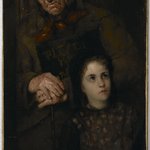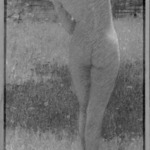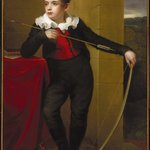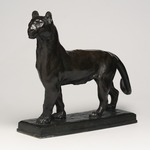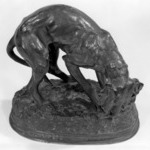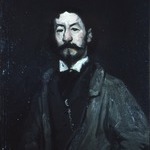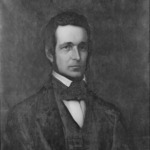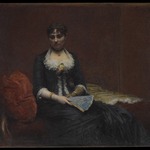
Letitia Wilson Jordan
Thomas Eakins
American Art
On View: American Art Galleries, 5th Floor, Witness
Letitia Wilson Jordan was the sister of Thomas Eakins’s friend and student David Wilson Jordan. Eakins had seen her at a party and was so taken with the young woman that he asked her to pose for him in the same outfit she had worn that evening.
The thoughtful, distanced expression on Jordan’s face evidences Eakins’s interest in conveying the emotional essence of his subjects. The careful modeling of the sitter’s body is characteristic of Eakins’s unflinching naturalism.
The thoughtful, distanced expression on Jordan’s face evidences Eakins’s interest in conveying the emotional essence of his subjects. The careful modeling of the sitter’s body is characteristic of Eakins’s unflinching naturalism.
MEDIUM
Oil on canvas
DATES
1888
DIMENSIONS
59 15/16 x 40 3/16 in. (152.3 x 102 cm)
frame: 68 7/16 x 48 11/16 x 4 1/2 in. (173.8 x 123.7 x 11.4 cm) (show scale)



SIGNATURE
Unsigned
INSCRIPTIONS
Inscribed lower right: "TO MY FRIEND / D.W. JORDAN / EAKINS.88"
COLLECTIONS
American Art
ACCESSION NUMBER
27.50
CREDIT LINE
Dick S. Ramsay Fund
PROVENANCE
1888, gift of the artist to David Wilson Jordan; November 12, 1926, consigned by David Wilson Jordan to Macbeth Gallery, New York, NY; January 28, 1927, purchased from Macbeth Gallery by the Brooklyn Museum.
Provenance FAQ
EXHIBITIONS
MUSEUM LOCATION
This item is on view in American Art Galleries, 5th Floor, Witness
CAPTION
Thomas Eakins (American, 1844–1916). Letitia Wilson Jordan, 1888. Oil on canvas, 59 15/16 x 40 3/16 in. (152.3 x 102 cm). Brooklyn Museum, Dick S. Ramsay Fund, 27.50 (Photo: Brooklyn Museum, 27.50_SL1.jpg)
IMAGE
overall, 27.50_SL1.jpg. Brooklyn Museum photograph
"CUR" at the beginning of an image file name means that the image was created by a curatorial staff member. These study images may be digital point-and-shoot photographs, when we don\'t yet have high-quality studio photography, or they may be scans of older negatives, slides, or photographic prints, providing historical documentation of the object.
RIGHTS STATEMENT
No known copyright restrictions
This work may be in the public domain in the United States. Works created by United States and non-United States nationals published prior to 1923 are in the public domain, subject to the terms of any applicable treaty or agreement.
You may download and use Brooklyn Museum images of this work. Please include caption information from this page and credit the Brooklyn Museum. If you need a high resolution file, please fill out our online application form (charges apply).
The Museum does not warrant that the use of this work will not infringe on the rights of third parties, such as artists or artists' heirs holding the rights to the work. It is your responsibility to determine and satisfy copyright or other use restrictions before copying, transmitting, or making other use of protected items beyond that allowed by "fair use," as such term is understood under the United States Copyright Act.
The Brooklyn Museum makes no representations or warranties with respect to the application or terms of any international agreement governing copyright protection in the United States for works created by foreign nationals.
For further information about copyright, we recommend resources at the United States Library of Congress, Cornell University, Copyright and Cultural Institutions: Guidelines for U.S. Libraries, Archives, and Museums, and Copyright Watch.
For more information about the Museum's rights project, including how rights types are assigned, please see our blog posts on copyright.
If you have any information regarding this work and rights to it, please contact copyright@brooklynmuseum.org.
RECORD COMPLETENESS
Not every record you will find here is complete. More information is available for some works than for others, and some entries have been updated more recently. Records are frequently reviewed and revised, and we welcome any additional information you might have.






